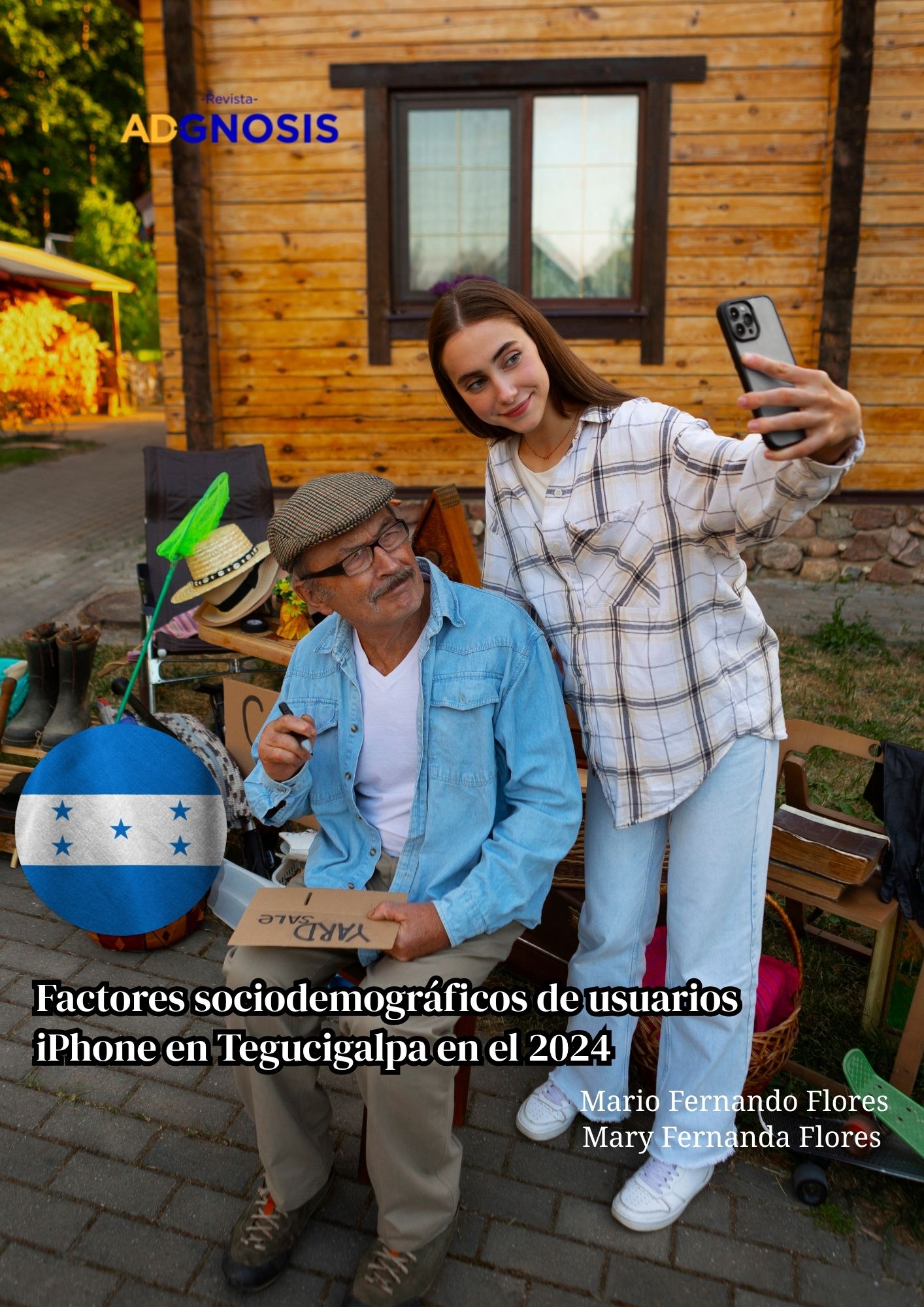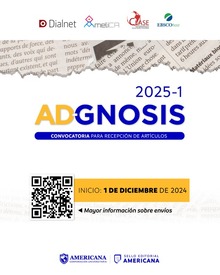Sociodemographic factors of iPhone users in Tegucigalpa in 2024
DOI:
https://doi.org/10.21803/adgnosis.14.16.913Keywords:
Consumption, Demographic, iPhone, Marketing, TechnologyAbstract
Introduction: This research study identifies the sociodemographic factors that influence iPhone use in Tegucigalpa during 2024. Method: Using a quantitative, descriptive, and non-experimental methodology with stratified probability sampling, the research surveyed 385 people. Results: Most iPhone users are young people aged 18 to 24 with a college education. Surprisingly, the high price is not a significant impediment to purchase, while the brand's reputation for high quality, its design, and ease of use are determining factors. The influence of status or social circle is not considered a primary motivation. Conclusion: iPhone users in Tegucigalpa value
the quality and durability of the device above other factors. The research provides essential data on the mobile technology market in Honduras, an area with few previous studies.
Downloads
References
Asociación Hondureña de Telecomunicaciones (AHTEL). (2023). Informe de Acceso y Uso de Internet en Honduras.
Atkinson, A. B. & Bourguignon, F. (Eds.) (2000). Handbook of income distribution. Elsevier.
Banco Central de Honduras [BCH]. (2024). Informe Anual sobre el PIB y Economía de Honduras. https://www.bch.hn/estadisticos/EME/Informe%20del%20Producto%20Interno%20Bruto%20Trimestral/Producto%20Interno%20Bruto%20II%20trimestre%202024.pdf
Becker, G. S. (1964). Human capital: A theoretical and empirical analysis, with special reference to education. National Bureau of
Economic Research.
Becker, G. S. (1993). Human capital: A theoretical and empirical analysis, with special reference to education. University of Chicago
Press.
Deaton, A. (2013). The great escape: Health, wealth, and the origins of inequality. Princeton University Press
Fernández, M. A. (2020). El impacto de la educación en las decisiones de consumo. Revista de Economía y Sociedad, 15(2), 45-60.
Galloway, S. (2017). The four: The hidden DNA of Amazon, Apple, Facebook, and Google. Portfolio/Penguin.
GfK. (2023). Estudio de mercado sobre tecnología y consumo en Honduras. https://shop.nielseniq.com/consumer-life/
Granovetter, M. (1973). The strength of weak ties. American Journal of Sociology, 78(6), 1360-1380. https://www.jstor.org/stable/
2776392
Inglehart, R. (2018). Cultural evolution: People’s motivations are changing and reshaping the world. Cambridge University Press.
Instituto Nacional de Estadística (INE). (2024). Proyecciones poblacionales para Tegucigalpa. https://ine.gob.hn/
Kotler, P. & Keller, K. L. (2016). Marketing management. Pearson.
Lee, E. S. (1966). A theory of migration. Demography, 3(1), 47-57.
Lee, R. D. (2003). The demographic transition: Three centuries of change. Population and Development Review, 29(2), 179-209.
Malthus, T. R. (1798). An essay on the principle of population. J. Johnson.
Notestein, F. W. (1945). Population: The long view. En T. W. Schultz (Ed.), Food for the world (pp. 36-57). University of Chicago Press.
Organización de las Naciones Unidas para la Educación, la Ciencia y la Cultura [UNESCO]. (2016). Educación 2030: Declaración
de Incheon y Marco de Acción para la realización del Objetivo de Desarrollo Sostenible 4. Garantizar una educación inclusiva
y equitativa de calidad y promover oportunidades de aprendizaje permanente para todos. UNESCO. https://unesdoc.unesco.
org/ark:/48223/pf0000245656_spa
Organización Internacional del Trabajo (OIT). (2012). Clasificación Internacional Uniforme de Ocupaciones (CIUO). Organización
Internacional del Trabajo.
Pew Research Center. (2019a). Defining generations: Where millennials end and generation Z begins. Pew Research Center.
Pew Research Center. (2019b). The link between marriage and consumer behavior. Pew Research Center.
Piketty, T. (2014). Capital in the twenty-first century. Belknap Press of Harvard University Press.
Ruiz, P. (2018). Influencia del entorno en el rendimiento educativo. Revista Latinoamericana de Estudios Educativos, 48(3), 75-90.
Twenge, J. M. (2017). iGen: Why today’s superconnected kids are growing up less rebellious, more tolerant, less happy—and
completely unprepared for adulthood—and what that means for the rest of us. Atria Books.
Universidad Nacional Autónoma de Honduras (UNAH). (2023). Estudio sobre percepción de estatus social y tecnología en jóvenes
hondureños. https://cienciassociales.unah. edu.hn/dmsdocument/15702

Downloads
Published
Issue
Section
License
Copyright (c) 2025 AD-GNOSIS

This work is licensed under a Creative Commons Attribution-NonCommercial-NoDerivatives 4.0 International License.





